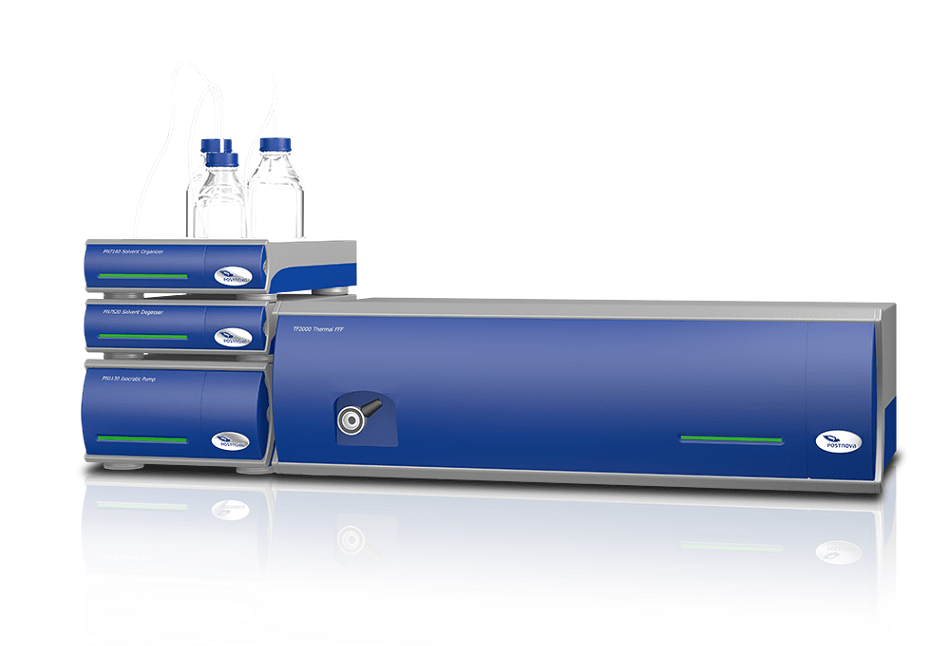
A new application report from Postnova Analytics demonstrates how Thermal Field-Flow Fractionation coupled to Multi Angle Light Scattering (TF3-MALS-RI) can be used to characterize different polyacrylate formulations.
Acrylic polymers (polyacrylates) are widely used in many industrial and consumer applications including paints and coatings. These polymers are often complex combinations of monomer units and the extent of cross-linking or branching determines the polymers’ physical properties and therefore determines which application(s) a given formulation will be most applicable for.
In Thermal Field-Flow Fractionation (TF3) - a separation field is established by applying a temperature gradient perpendicular to the channel. The top channel wall is heated and the bottom wall is cooled, driving polymers towards the cold wall by thermal diffusion. Smaller polymers diffuse into the faster flow profiles of the laminar channel flow and elute to detectors sooner than larger polymers.
Characterization of three different polyacrylate formulations was undertaken using a Postnova Analytics TF3-MALS-RI system enabling access to their molecular weight distributions as well as their radii of gyration. In addition, plotting the log of molecular weight (log M) versus the log of radius of gyration (log Rg) yields a conformation plot, which can be used to estimate the degree of polymer cross-linking.
From the data presented in this report, the authors show how TF3-MALS-RI is uniquely able to separate large polyacrylate molecules and provide precise molecular weight and Rg values. By comparison, most chromatography column-based separation techniques would filter out some or all polymer molecules this large, resulting in incorrect determination of their size and molecular weight distributions. Data is also shown that demonstrates how TF3-MALS can be used to elucidate the polymer structure, which can provide insight into why different formulations have different physical properties.
For a copy of this new application report please visit https://bit.ly/3h0Pm7U.